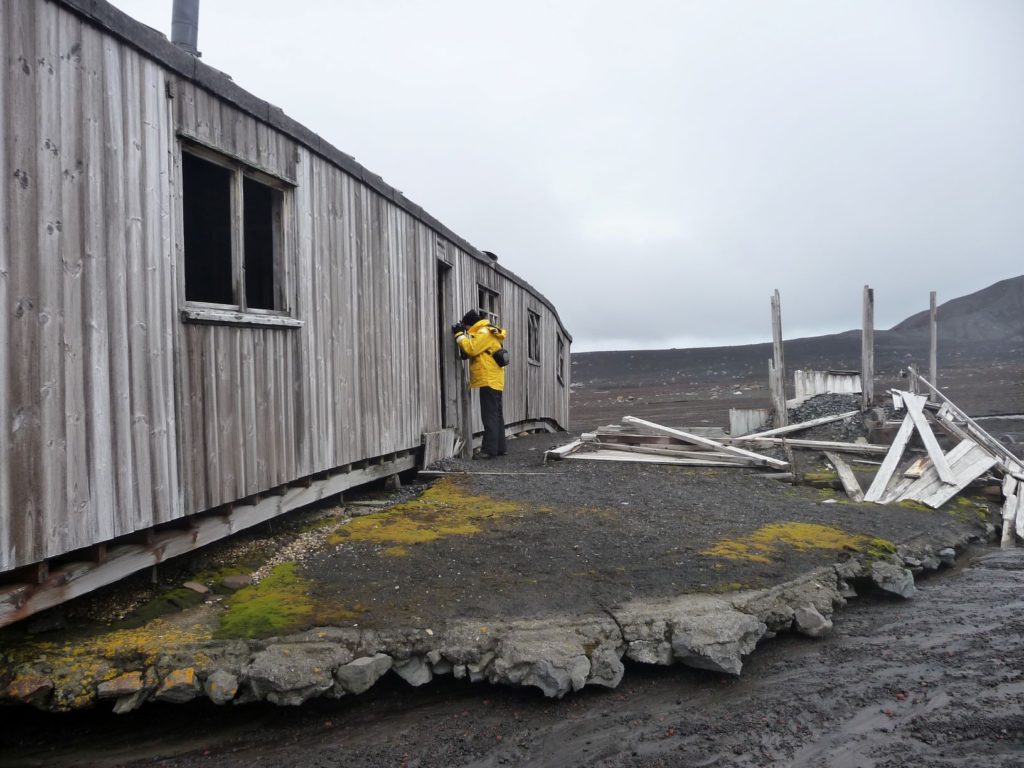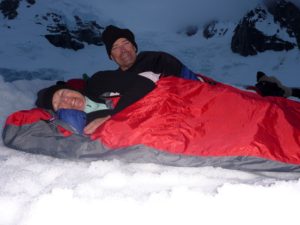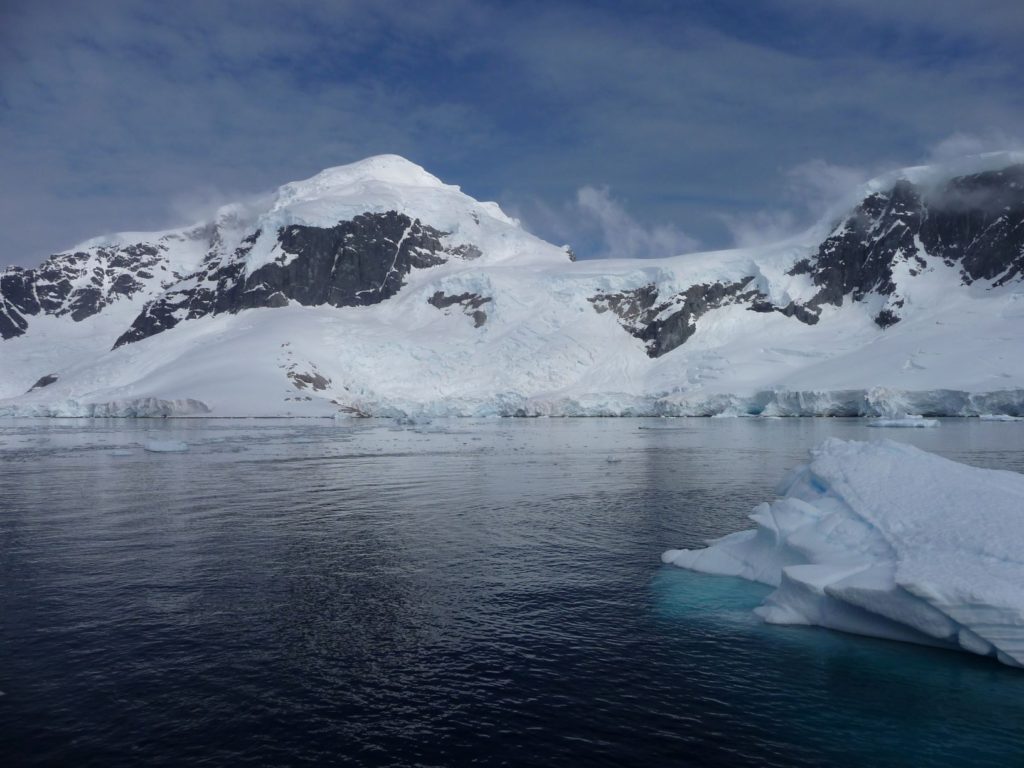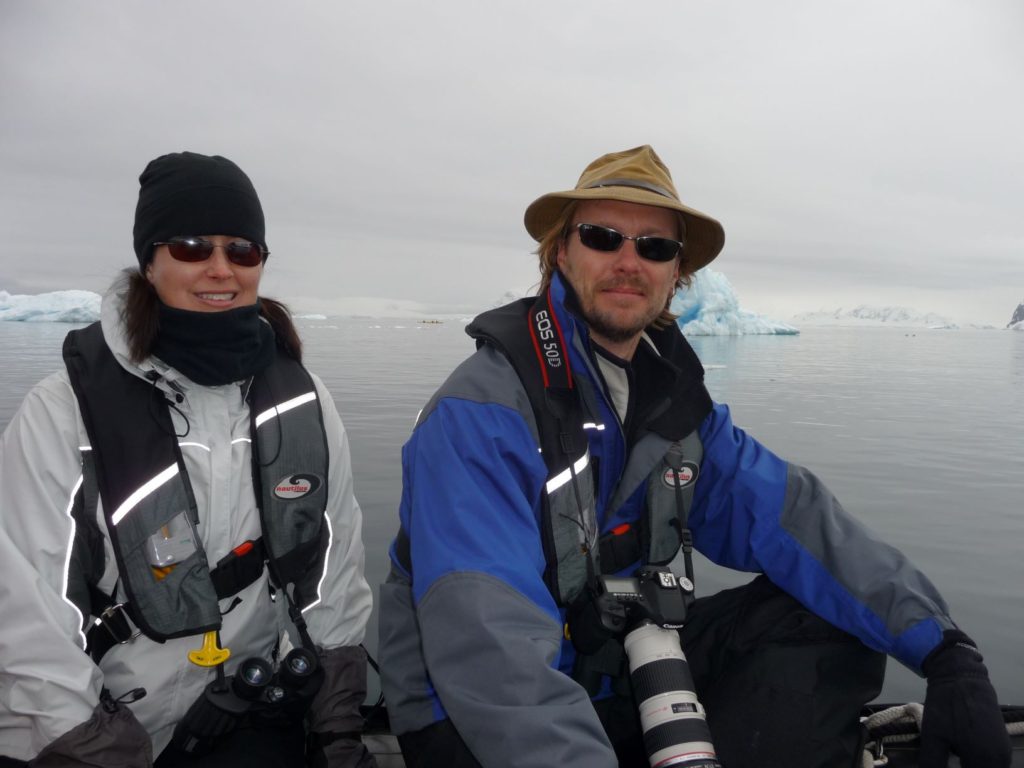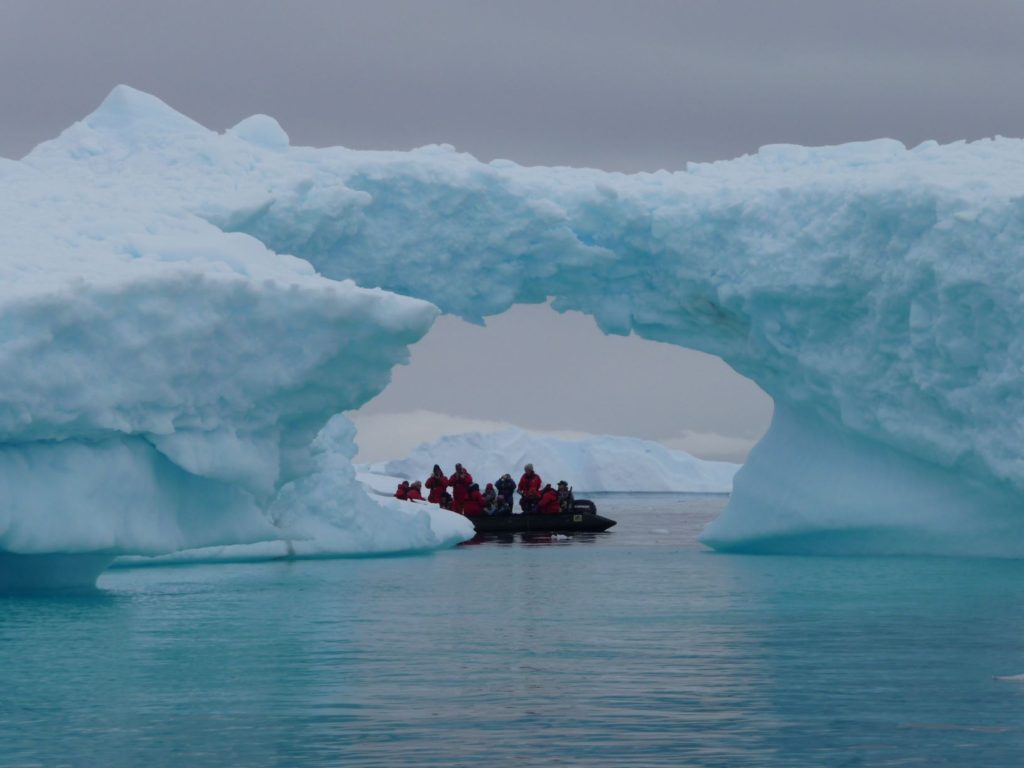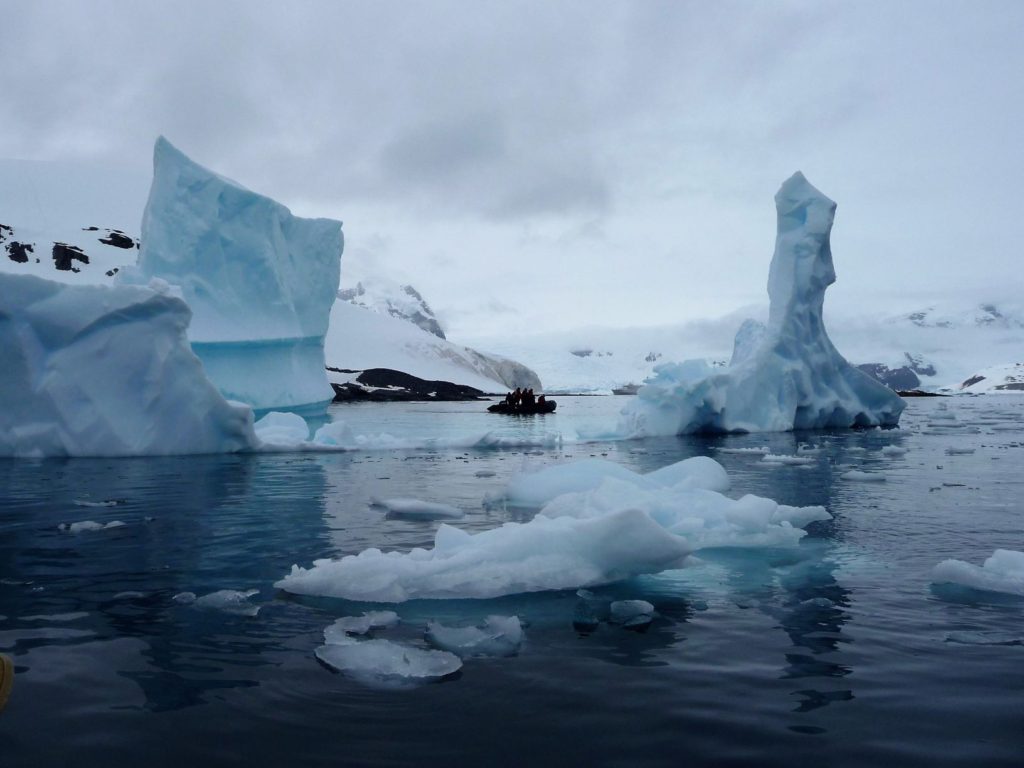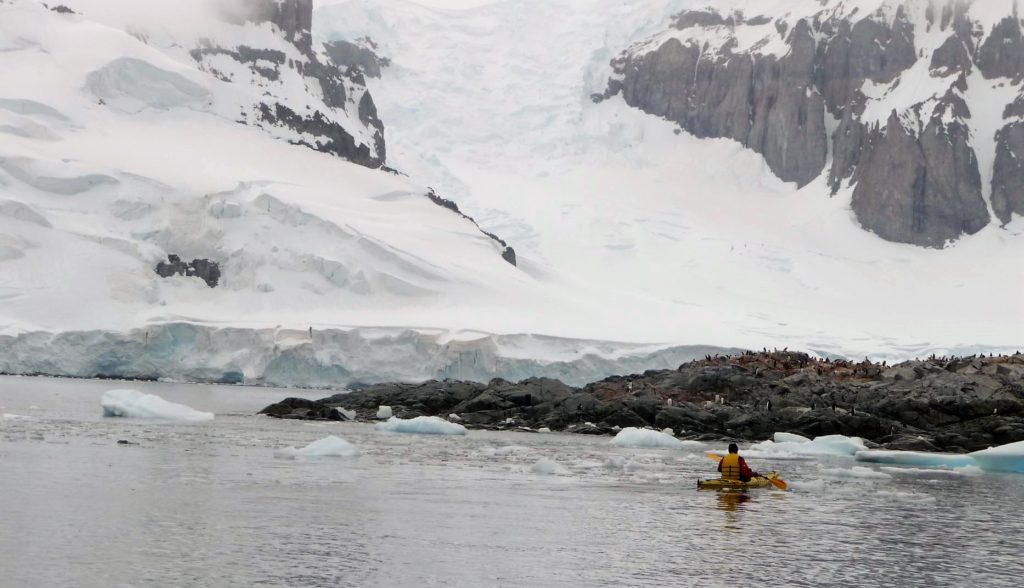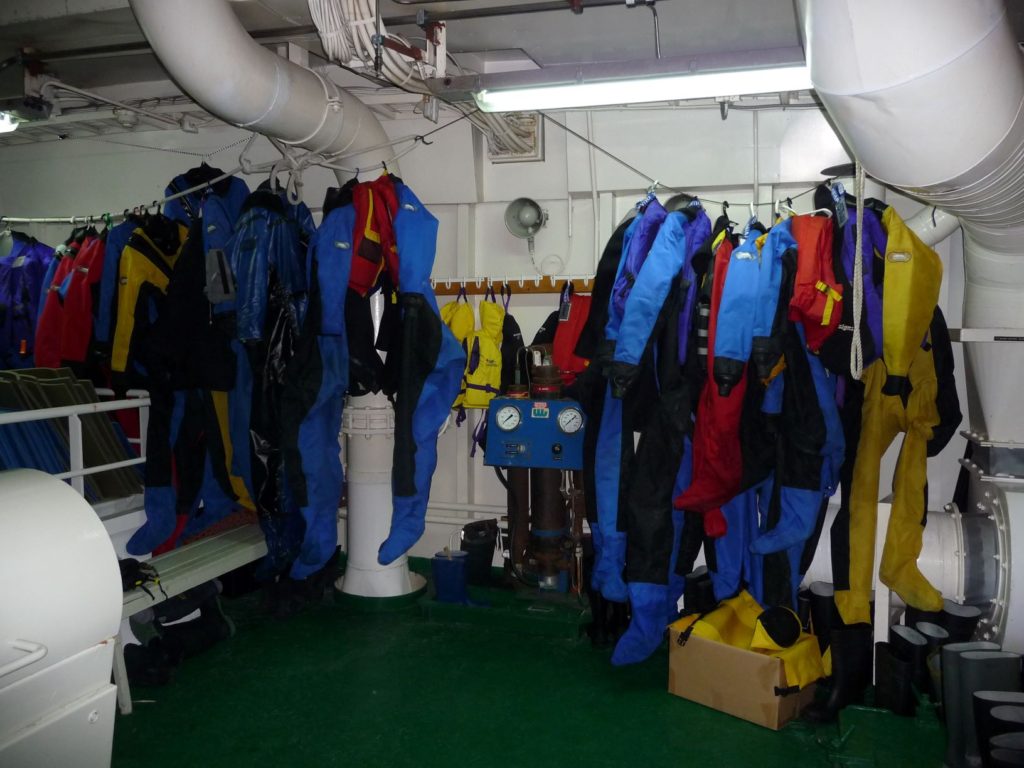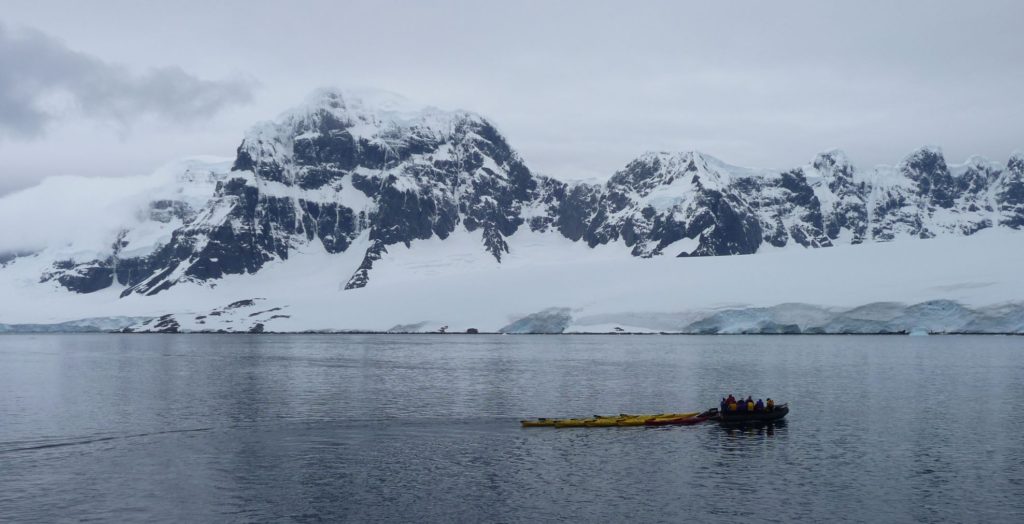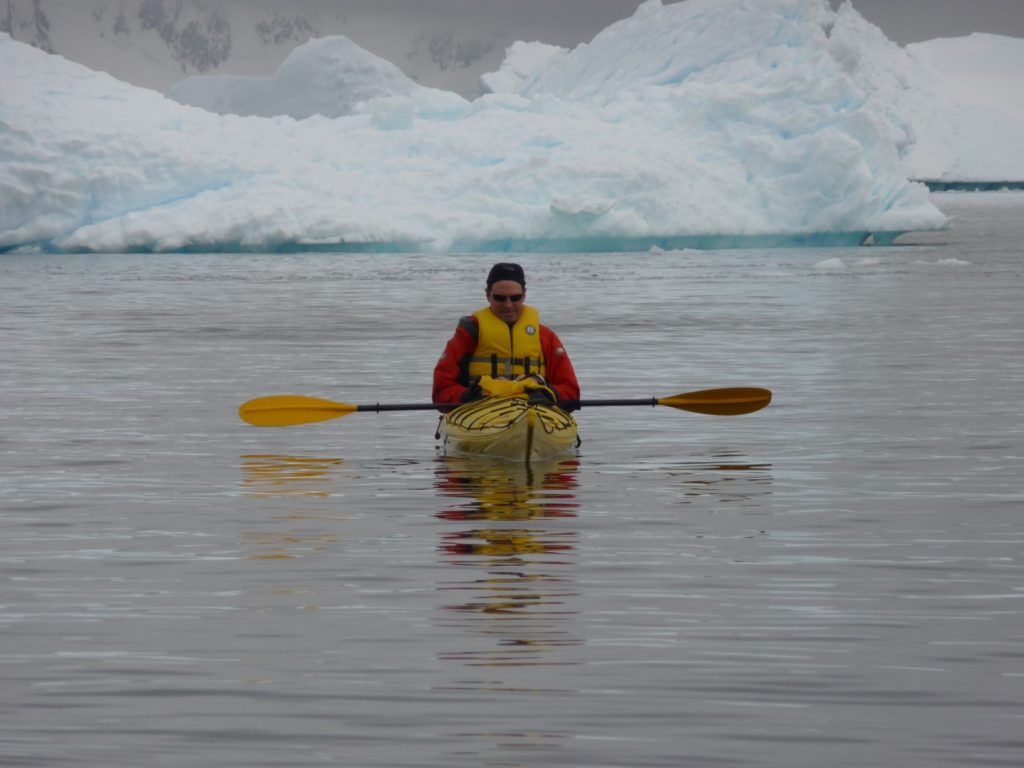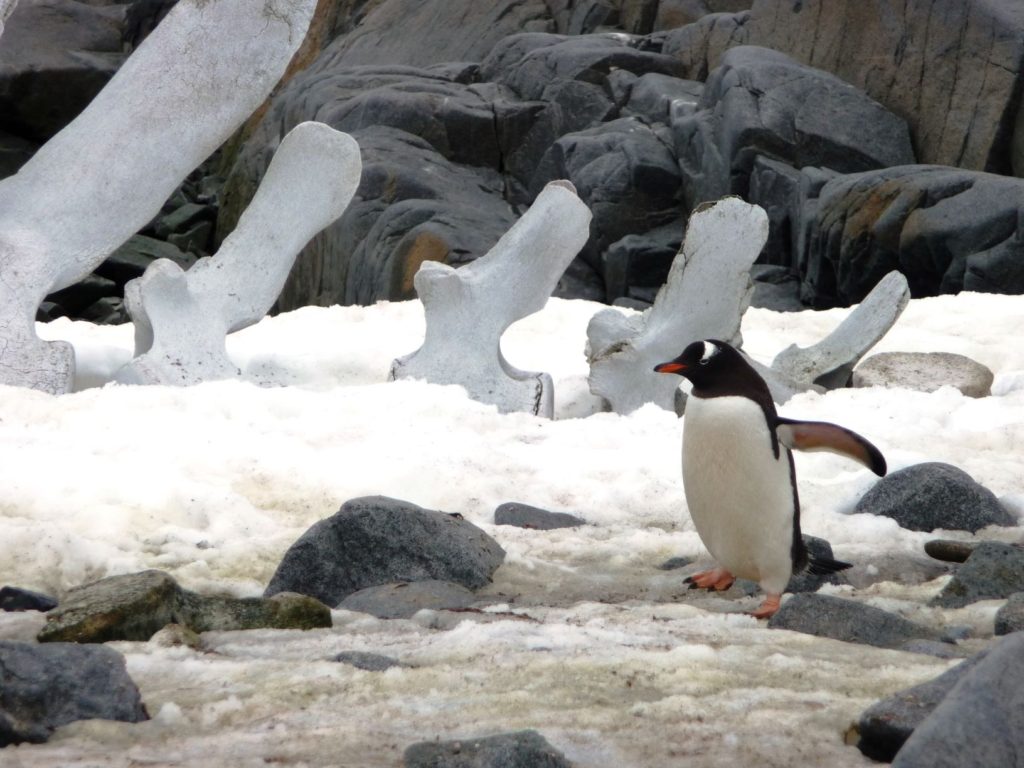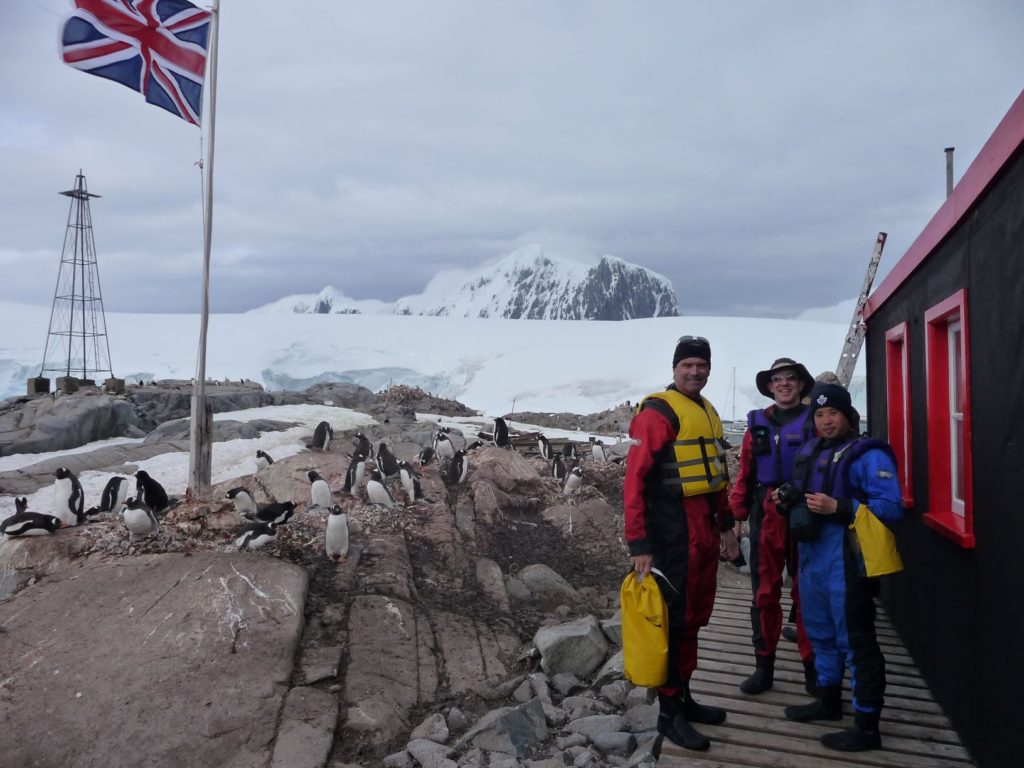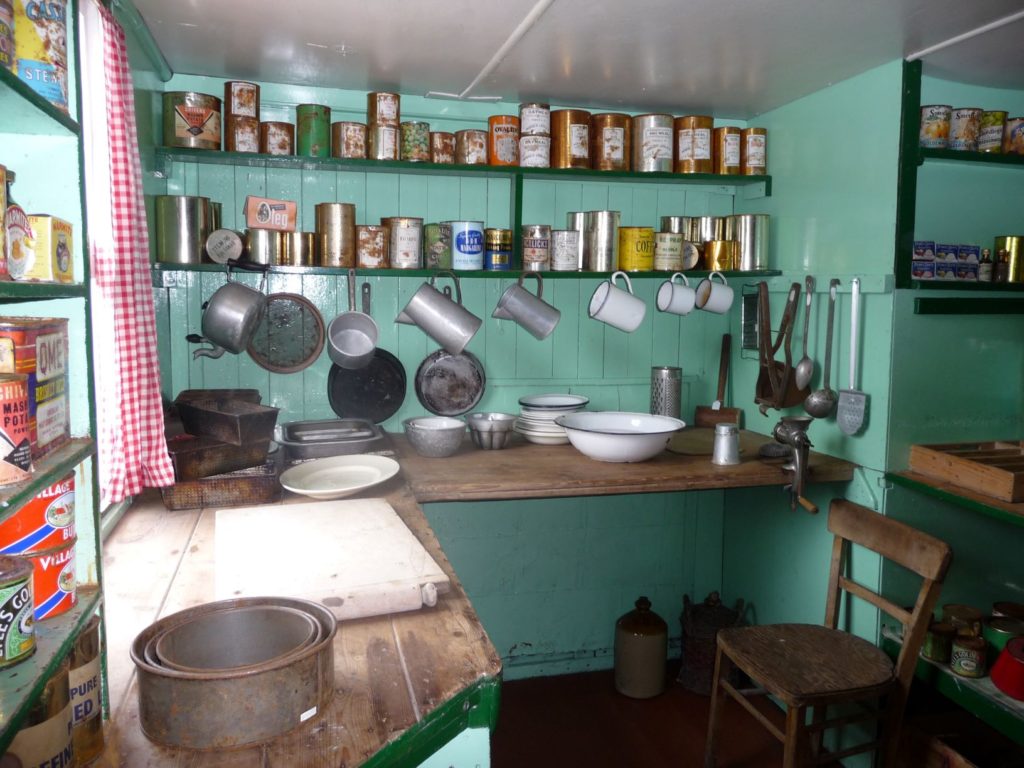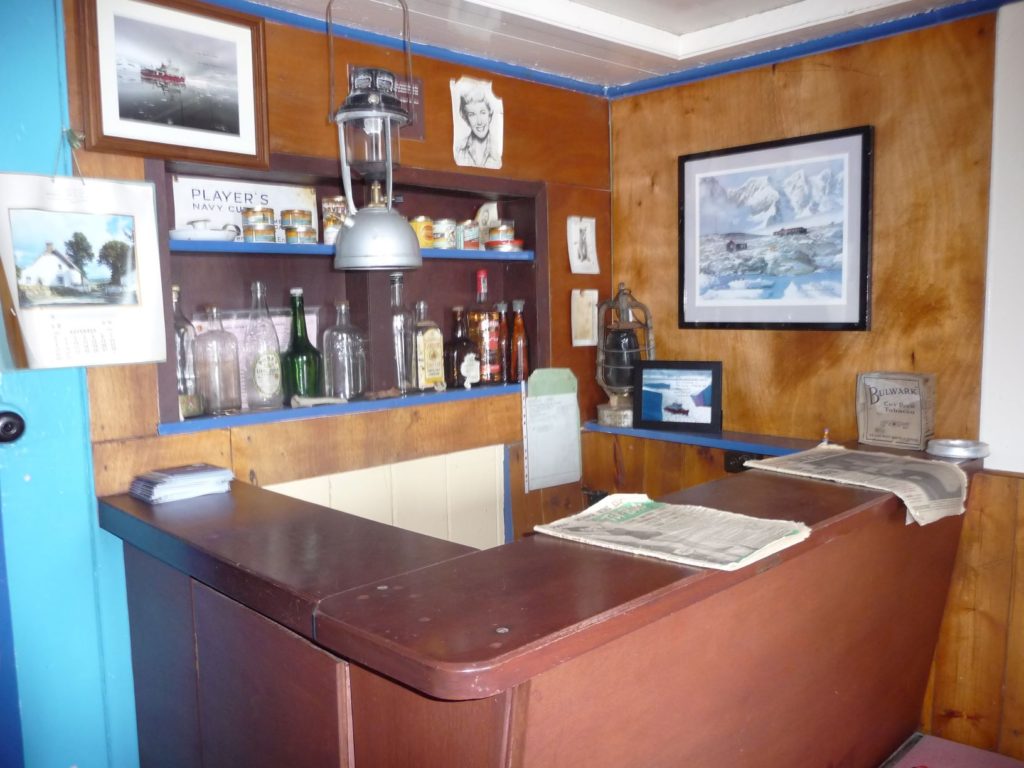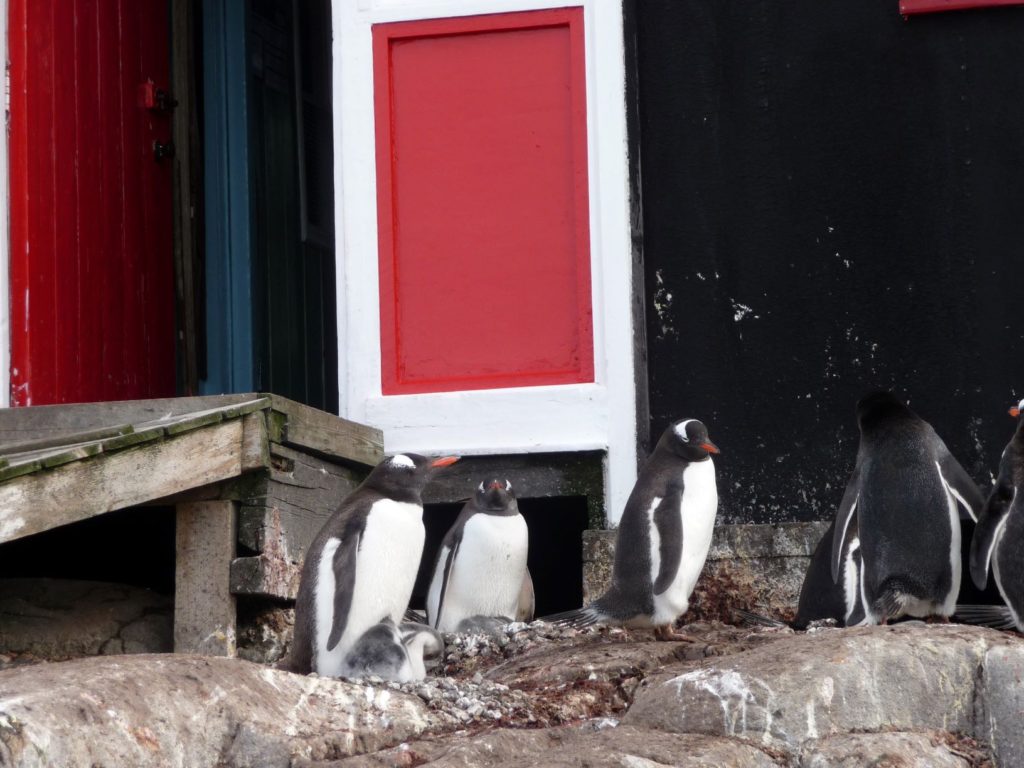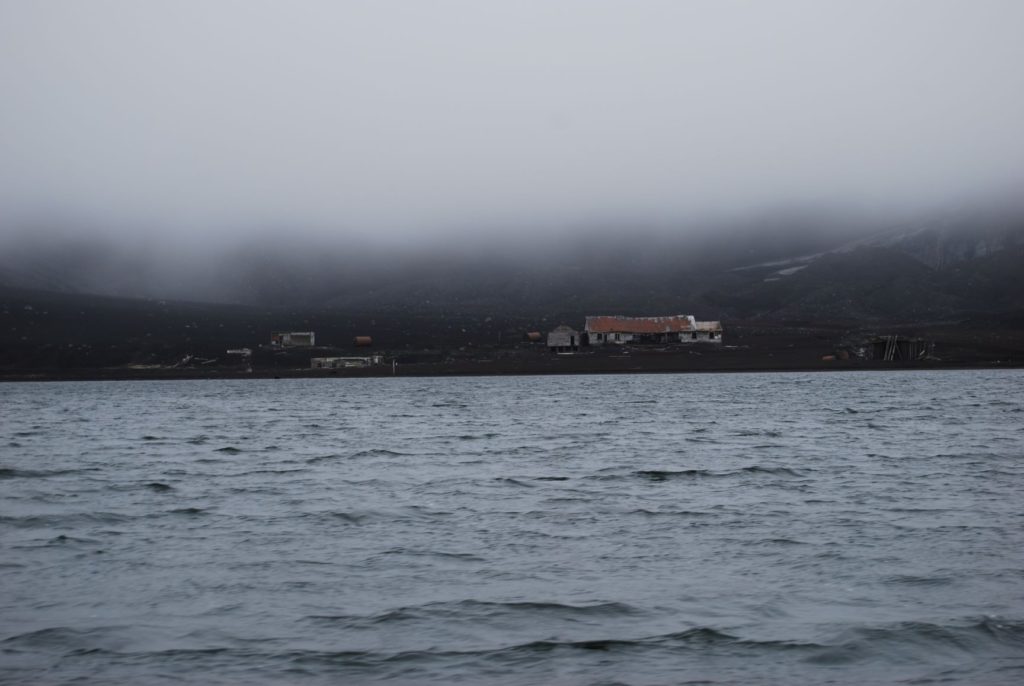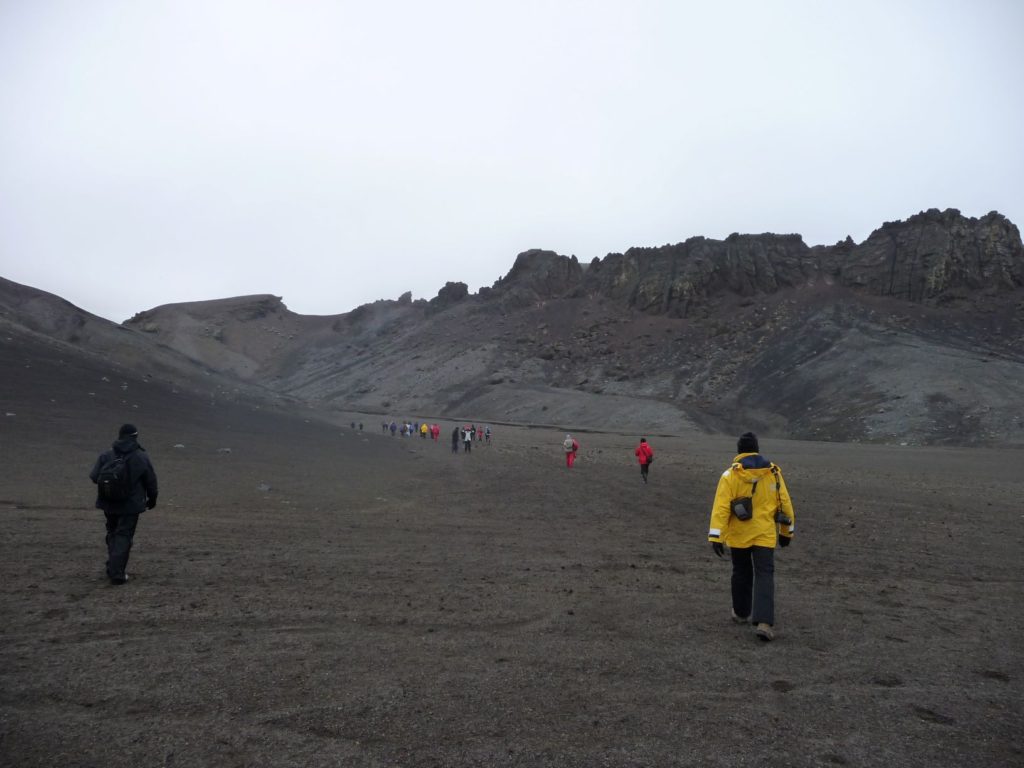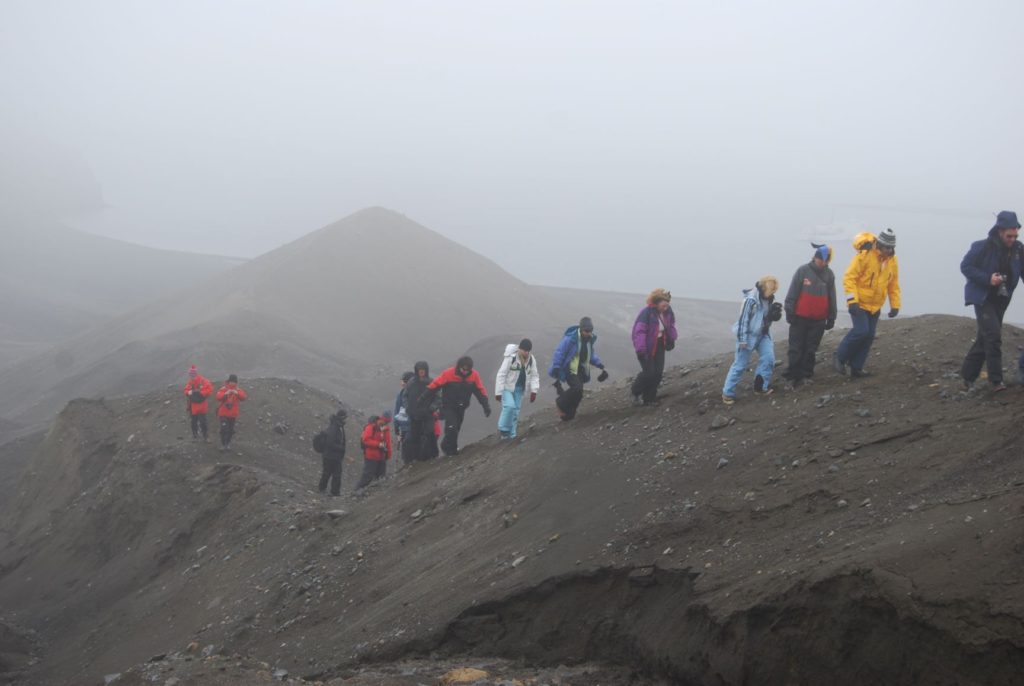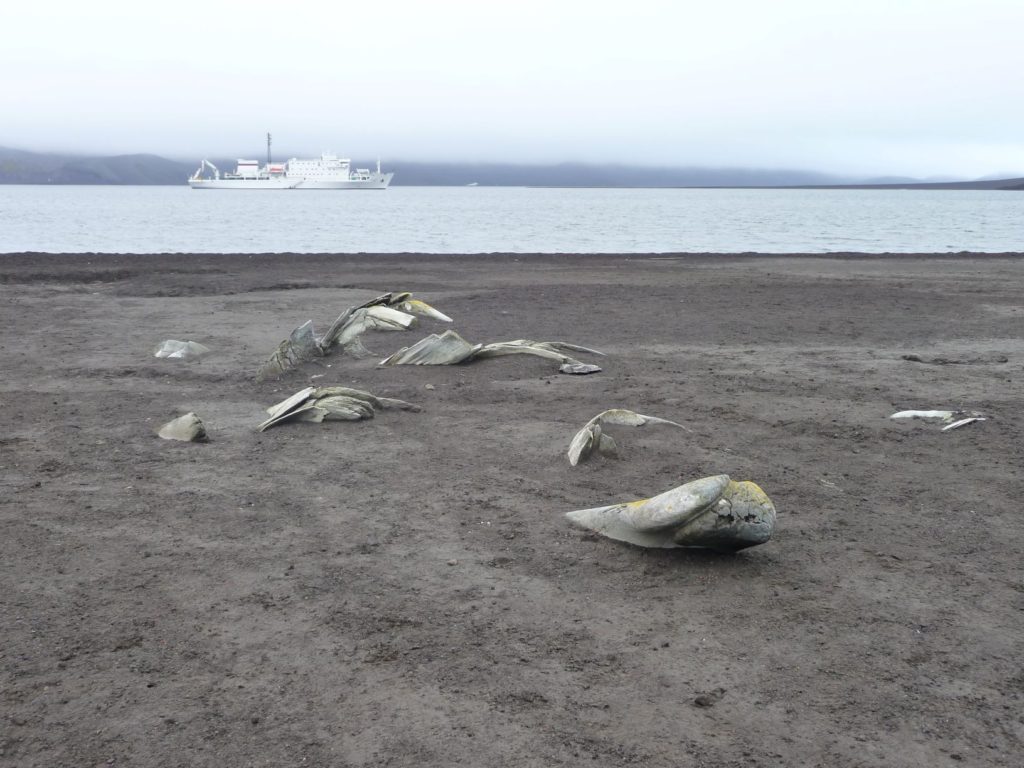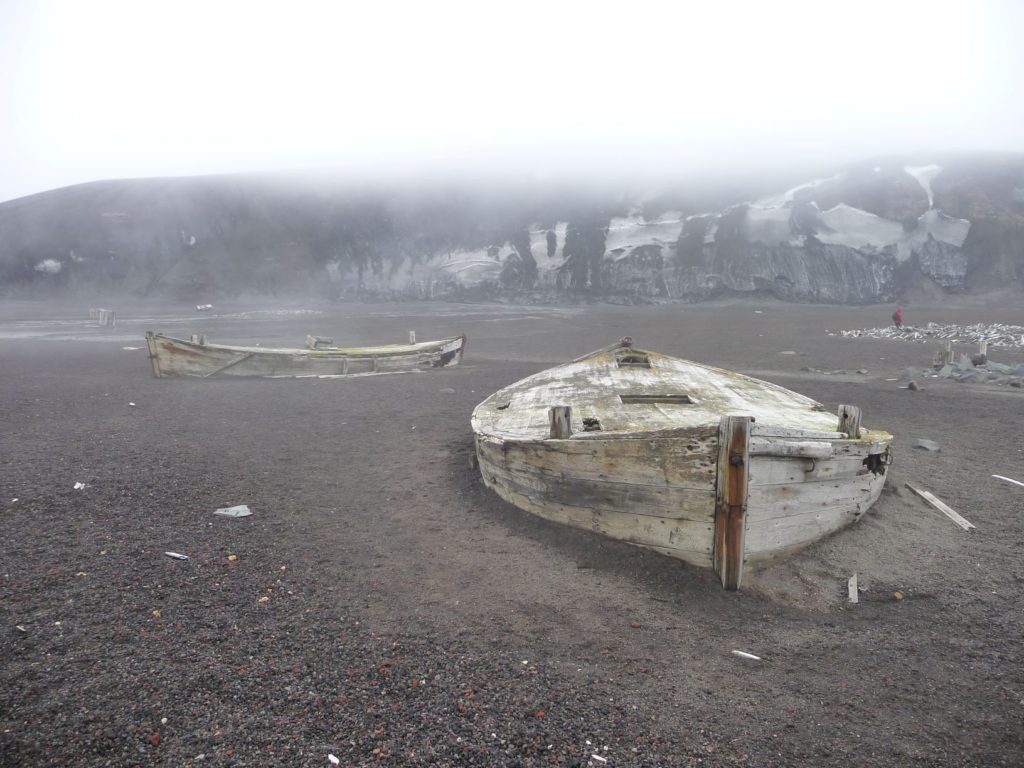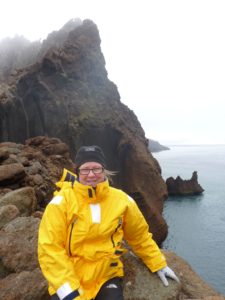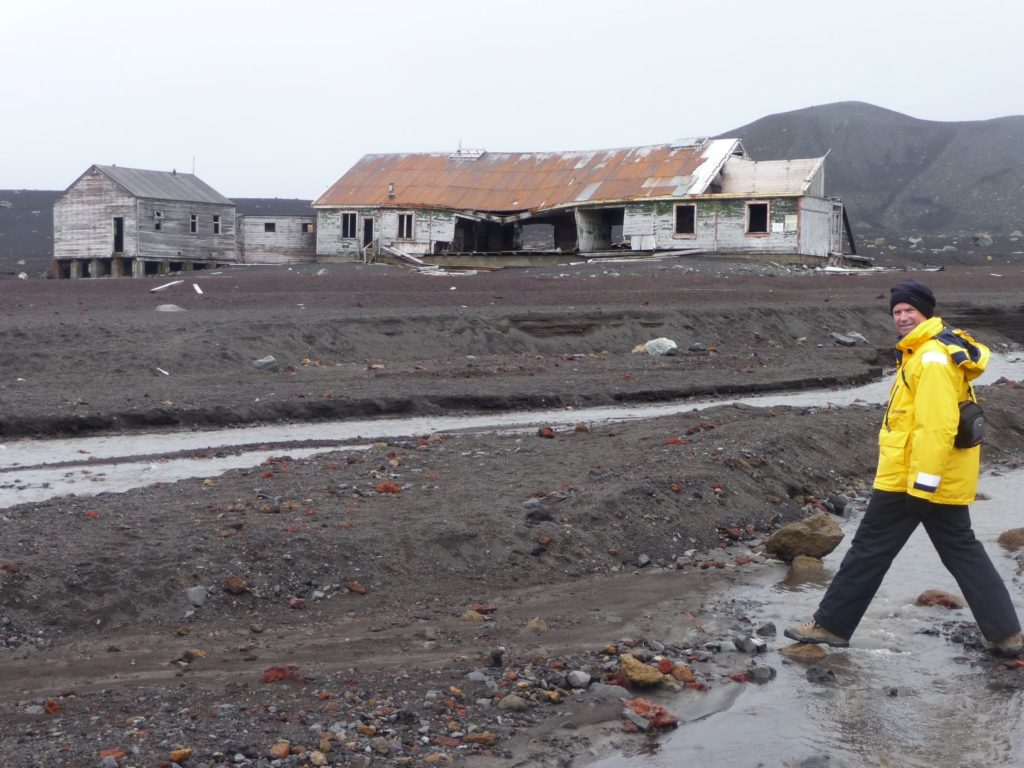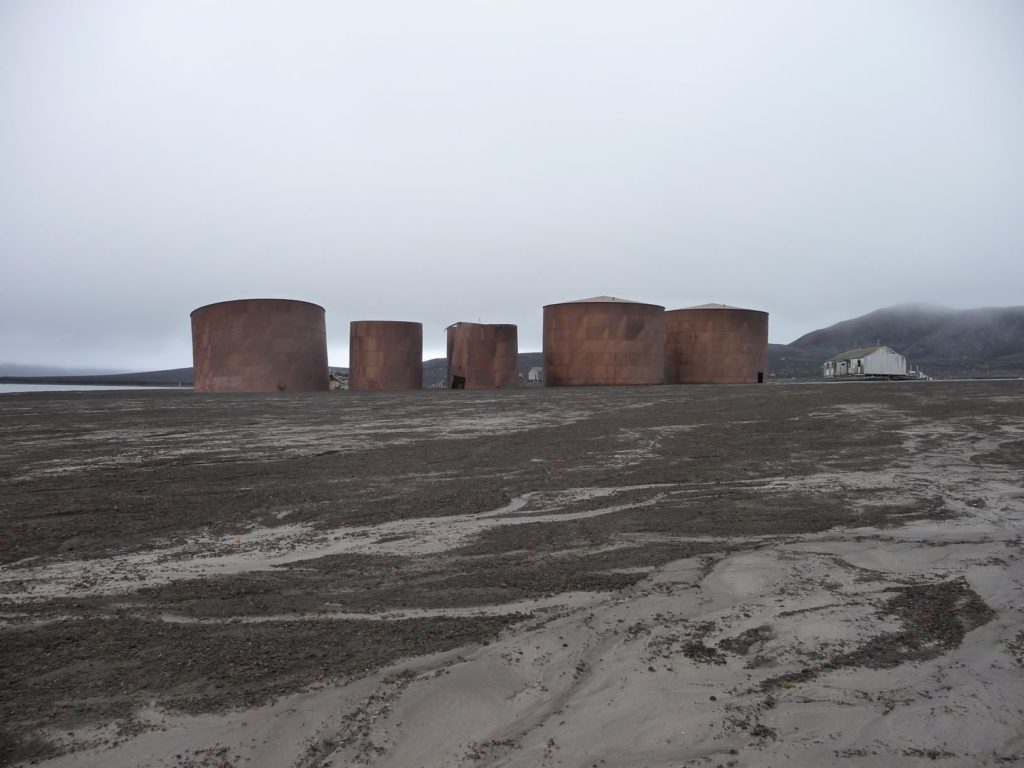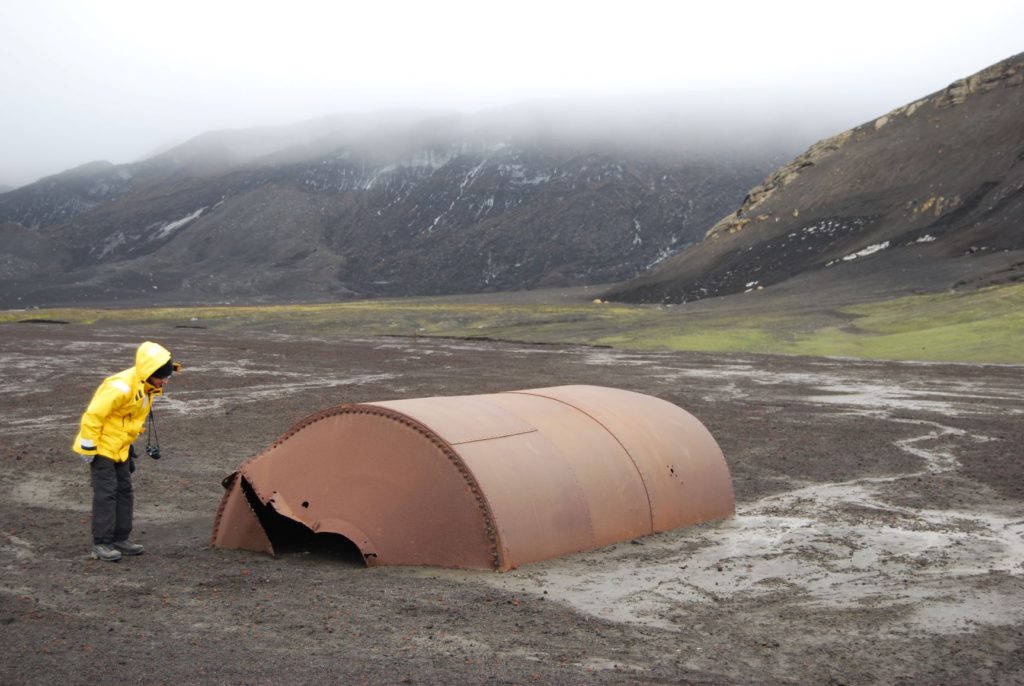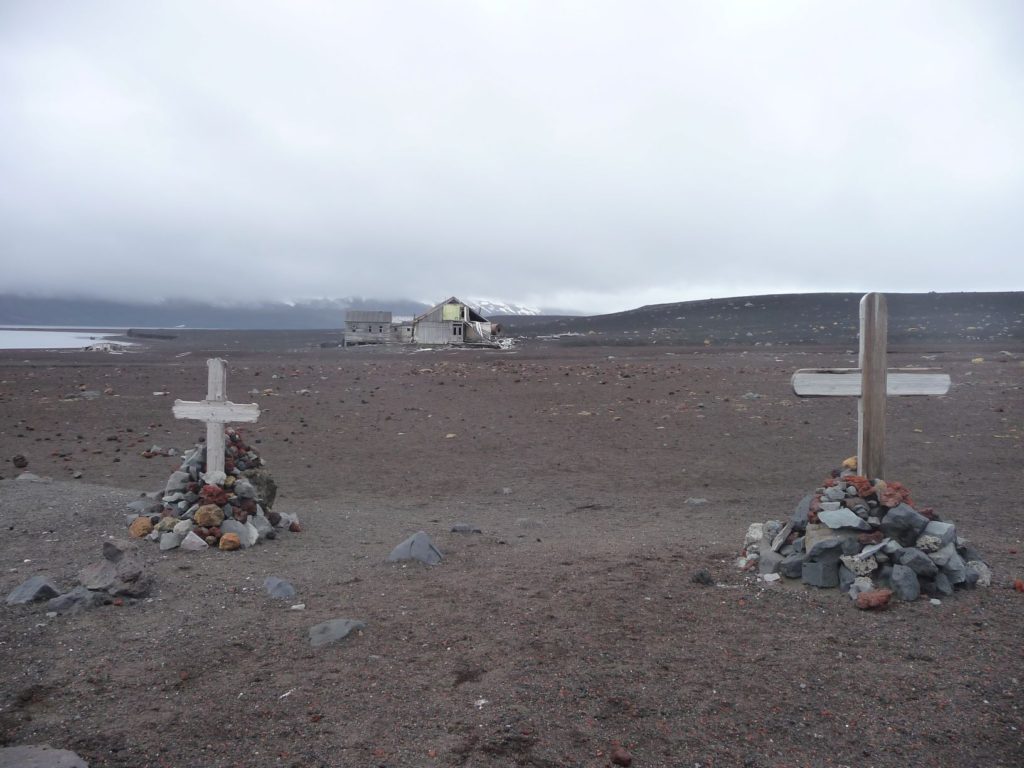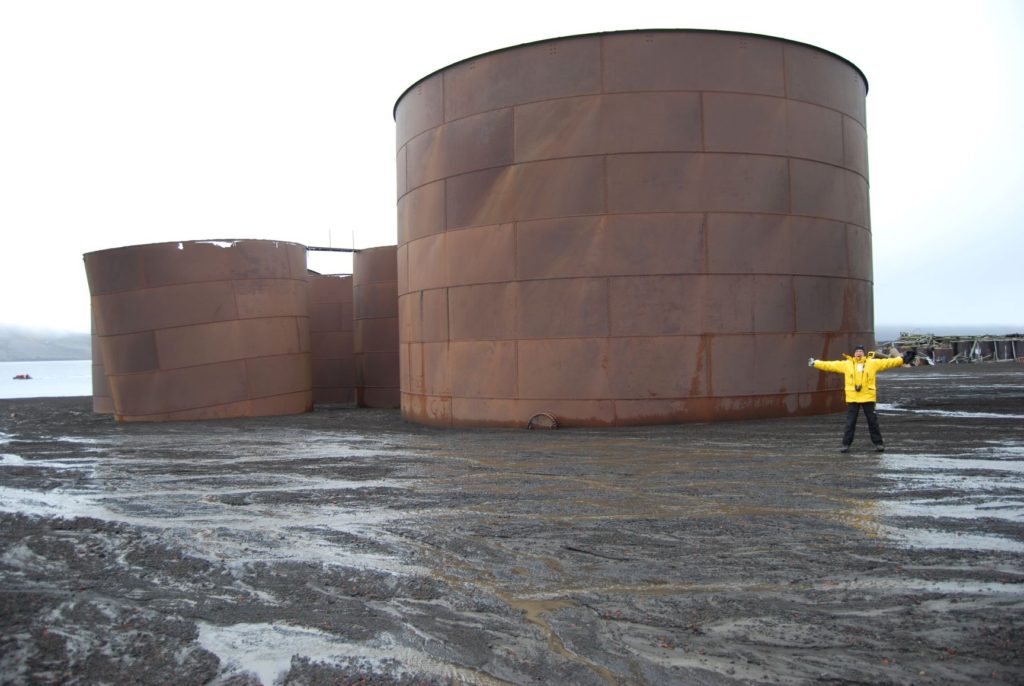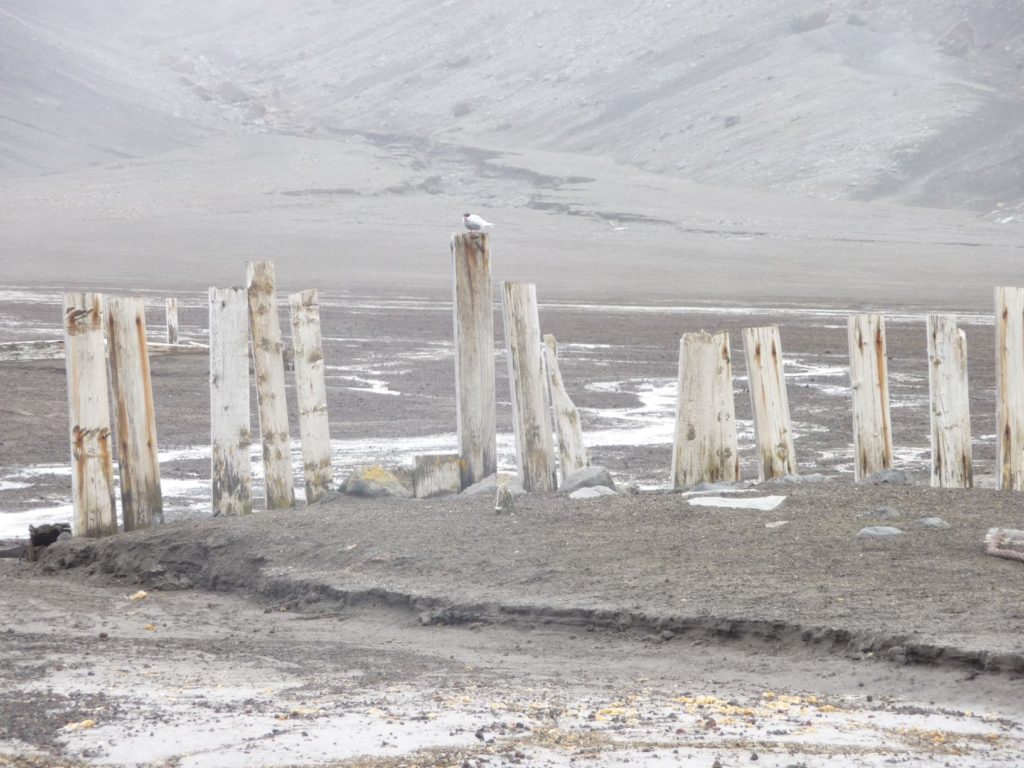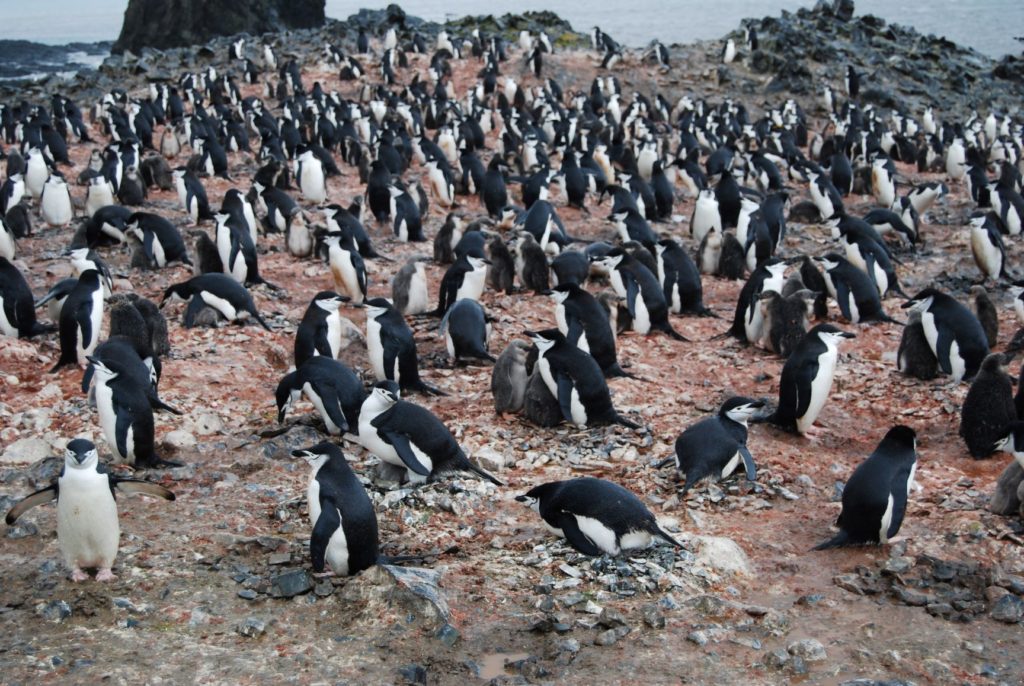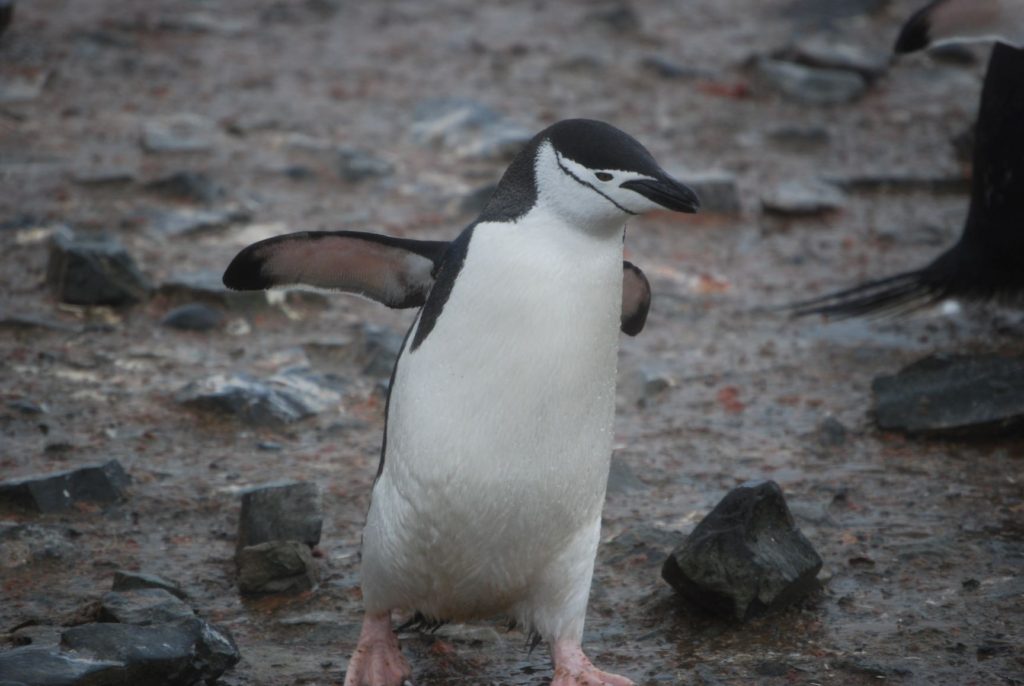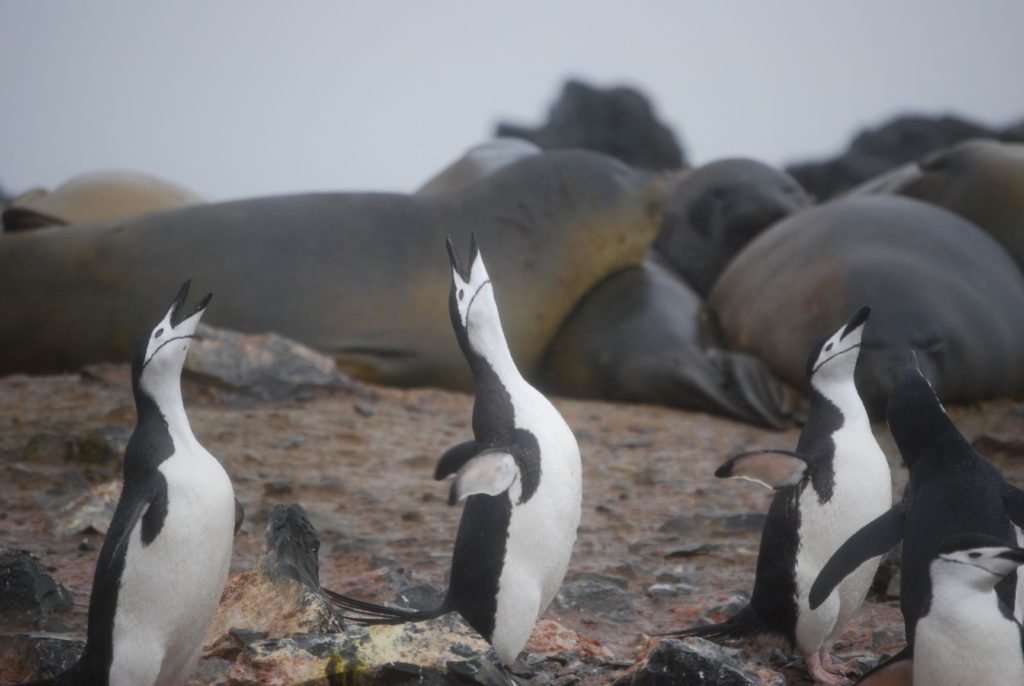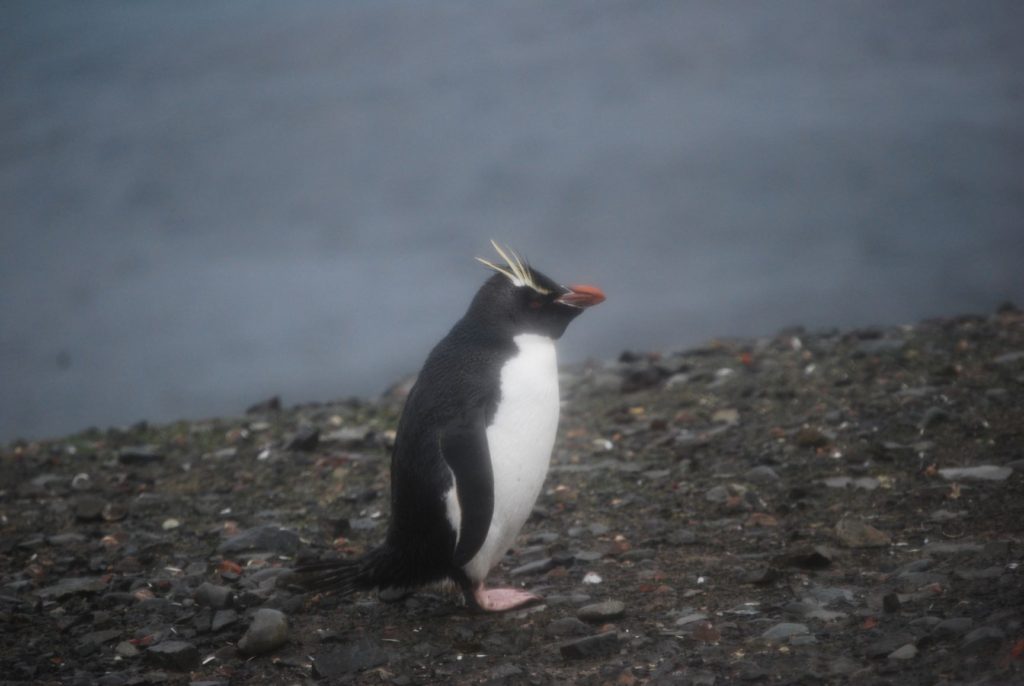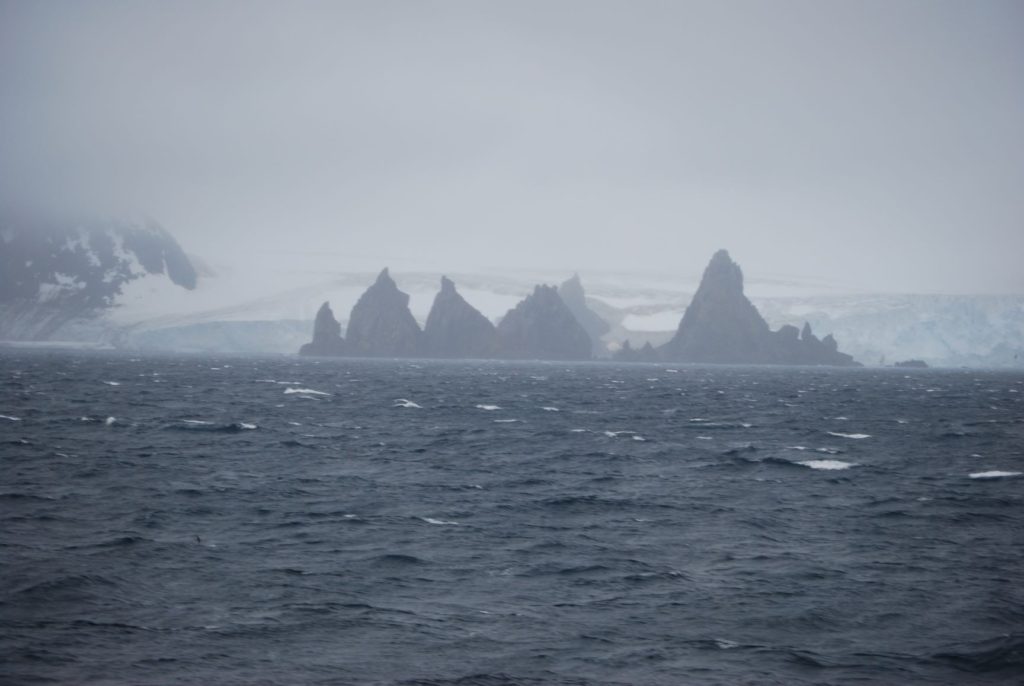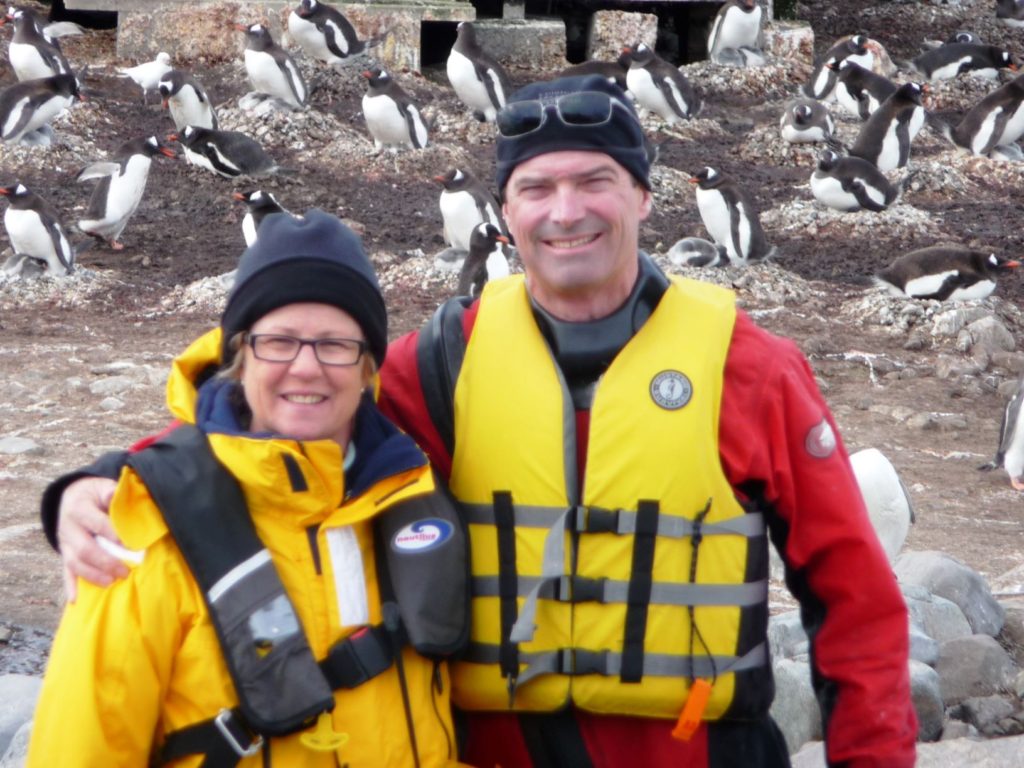Ah, sleeping under the stars, the ultimate camping experience. But if you’re sleeping under the stars in the snow in Antarctica there really aren’t any words to describe the moment. We woke to a beautiful morning with sun sneaking thru the clouds, the water still and dark, the glaciated walls of ice all around us. Really one of the most awesome travel experiences of our lives.
Fortunately the ship had waited for us and we loaded back on the Akademik Ioffe before leaving our camping island tucked away in Paradise Harbour and cruising up the beautiful Errera Channel, enjoying the sunshine, brisk air, spectacular icebergs and dramatic cliffs and glaciers. Would anyone ever tire of this stuff?
At Couverville Island, a monstrous rock sticking up like a humpback whale, we dropped anchor. Julie opted for the full morning excursion on the Zodiac while most of the other paddlers and I went on a circumnavigation of the island.
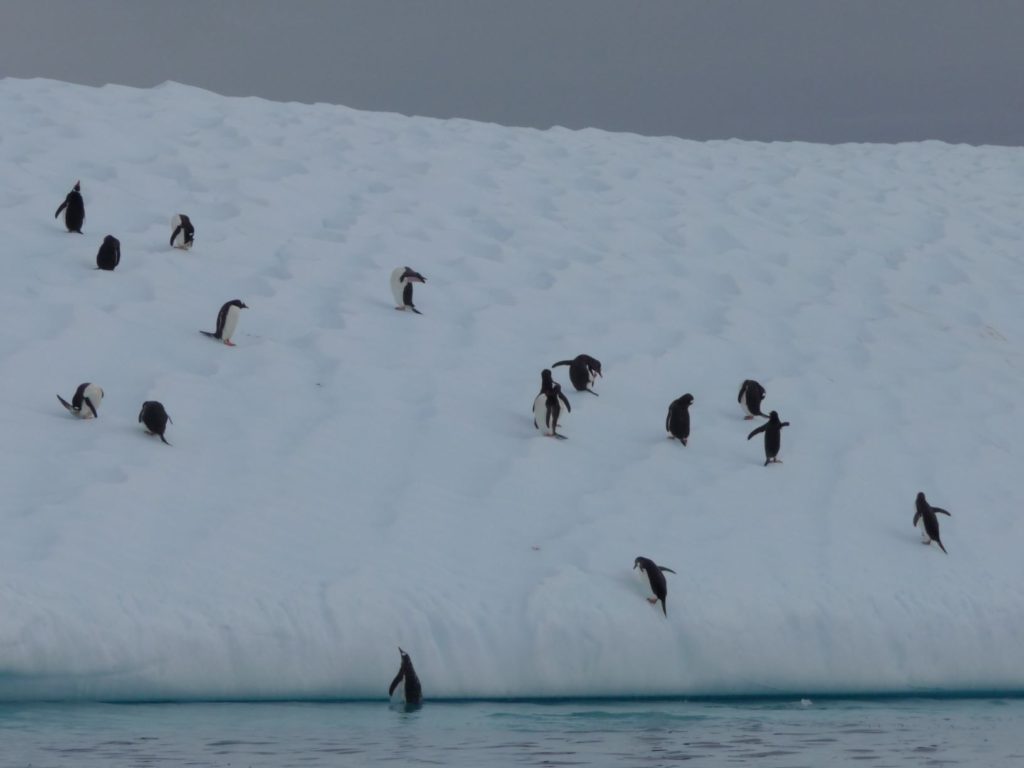
The source of endless entertainment, these little guys would ‘jump’ out of the water onto the ice or slide down the ice and dive into the water
The waters were glassy calm, sun periodically out and water sometimes shallow around the back of the island. There were a zillion Gentoos of course with their chicks, all calling out to each other. We spotted one lonely Chinstrap penguin, many cormorants (also called Blue Eyes Shags) and countless other birds. It was a relaxed and enjoyable paddle, claimed to be the first circumnavigation of the island (very doubtful). Julie had a great Zodiac trip with beautiful bergs and great scenery all around (with the penguins also of course).
There was one iceberg that had a tunnel in it, or depending on how you look at things perhaps it had an arch. It wouldn’t have been safe to paddle through the arch but we took multiple photos and enjoyed a number of other special shaped bergs that were trapped in the shallow water. At one stage I was able to paddle up to Julie’s Zodiac as she cruised the small bay.
Back in for lunch and a cruise down the Neumayer Channel (our second time!) to Port Lockroy, the British base on Wiercke Island near Dorian Bay. We dropped anchor about 16.00 and the hearty kayakers got on their moon suits and set out. Julie opted for a land visit while us kayakers were hoping to eventually land and visit the base.
We started paddling up the channel between Doumer Island and Wienke Island with the high steep dramatic snow-covered mountains of Wienke Island ahead of us providing our inspiration. Anywhere else in the world that spectacular range and glaciers would be a national park, lodge and airport.
The wind was shooting down the channel and it became cold and choppy, moving into white caps. Suddenly this became a very good paddle for Julie to miss. We fought the side wind to cross the channel and tucked into the little cove where Port Lockroy was positioned. We transferred to land via Zodiac; Julie met me before climbing up the trail to see this non-scientific British base.
The Port Lockroy base is now set up as an excellent little museum of life in Antarctica in the 1950’s plus a good gift shop, all manned for four months of the year by one man and three women. We bought T shirts (of course) and other stuff, chatting to these hearty souls. Julie and I wandered through the old rooms with their low ceilings and their dark small spaces, crowded with remnants from life back all those years ago.
The best part of the base was the nesting Gentoo penguins with their fluffy grey chicks absolutely everywhere, around the house, next to the walkway, almost a nuisance. No need for the telephoto or the 5 metre rule, they were at your feet and sometimes you had to step over them.
The following day was to feature our last two shore visits and they promised to be good finales before the tough trip across the Drake Passage and back to Ushuaia.
We repeated the usual morning process, showers in the community toilets, brekkie in the community dining room, conversation with our fellow adventurers which was a mix of dissecting the previous day and anxiously anticipating the next. We were down the gangway by 09.30 after sailing through Neptune’s Bellows, a narrow passage only 230 metres wide with dangerous rocks blocking the southern half, into the huge Fosters Bay in Deception Island. The island took the form of a dramatic collapsed volcano, or a cauldron, and made a spectacular and safe setting for the seal and whaling industry in the early 1900’s. We dropped anchor in Whalers Bay where decaying and rusting buildings remain of that long ago business.
The gritty black volcanic ash beach was our landing place, the whole area surrounded by the steep walls of the cauldron while almost everything up the slopes were hidden by a dense low fog.
We headed down the beach past some whale bones and half buried old boats, a distant moment lost in time. The plan was to walk up one of the ridges quite high to a lookout called The Nipple. The slippery climb up the steep scree was hard work in full Antarctic gear and made worse by the fog and stiff breeze. Julie turned back at the halfway point (smart move) but we kept trekking up the steep incline, over washes, thru mud-covered ice and black volcanic dirt. Eventually we made the summit, such as it was, with no visibility at all. A quick gathering, some photos and back down the same way. It was good but I’m not doing it again next time.
Meanwhile, Julie and others had climbed down and then up to Neptune’s Window for great views outside the cauldron. We met up on the beach with some cute Chinstrap penguins (why are they called Chinstrap? Because on a white face with a black top they have a thin black line running from ‘ear to ear’ under their chin – a perfect chinstrap) and walked over to the old buildings which were almost one kilometre away down the beach.
These were great old relics from the island’s historic past, substantial buildings for accommodation, some huge steel tanks and others which were boilers for the whale oil. There were two old graves and some lichen and moss that added a touch of yellow and green to this stark black moonscape. All absolutely super stuff and the dense fog added to the desolate mood.
Unfortunately we missed our timing and got back too late for a hot/cold swim in the thermal volcanic sand, back to the ship for lunch (including Ice Cream Social for desert – they continue to surprise us in little ways, even this late in the cruise) and set sail back thru the Bellows to Livingstone Island.
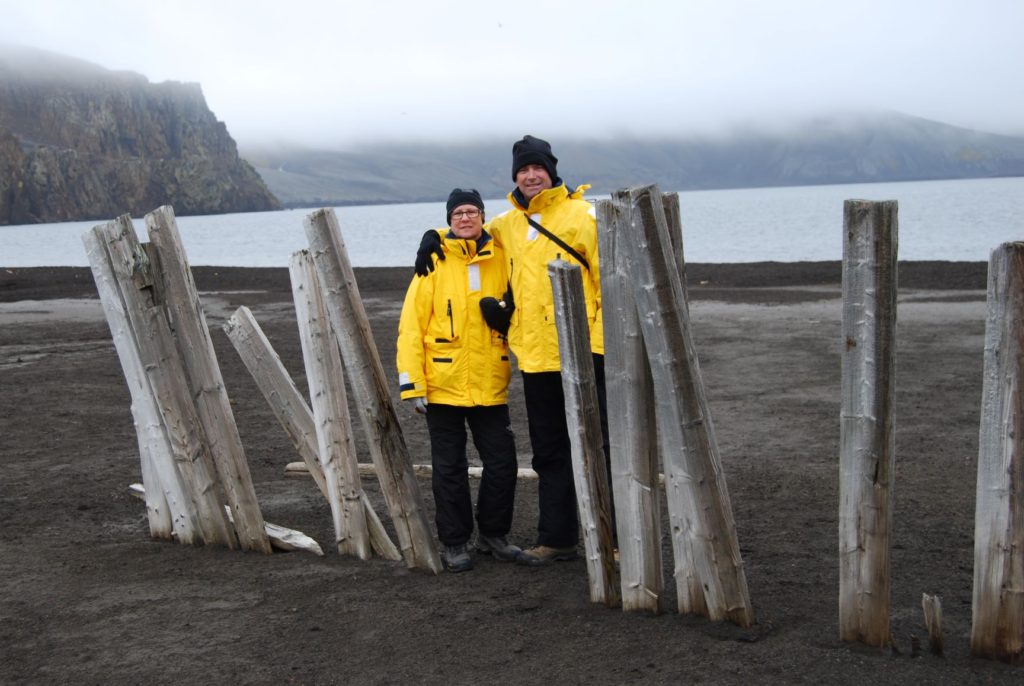
We loved the beautiful but desolate feeling of Whalers Bay and the amazing history of the whaling station
We arrived at Hannah Point in Walker Bay on Livingstone Island in foul weather, strong icy winds, rain and sleet and very choppy water. The Zodiac trip over to the island was wild and we were thoroughly drenched (except under our special yellow jackets) by the time we arrived.
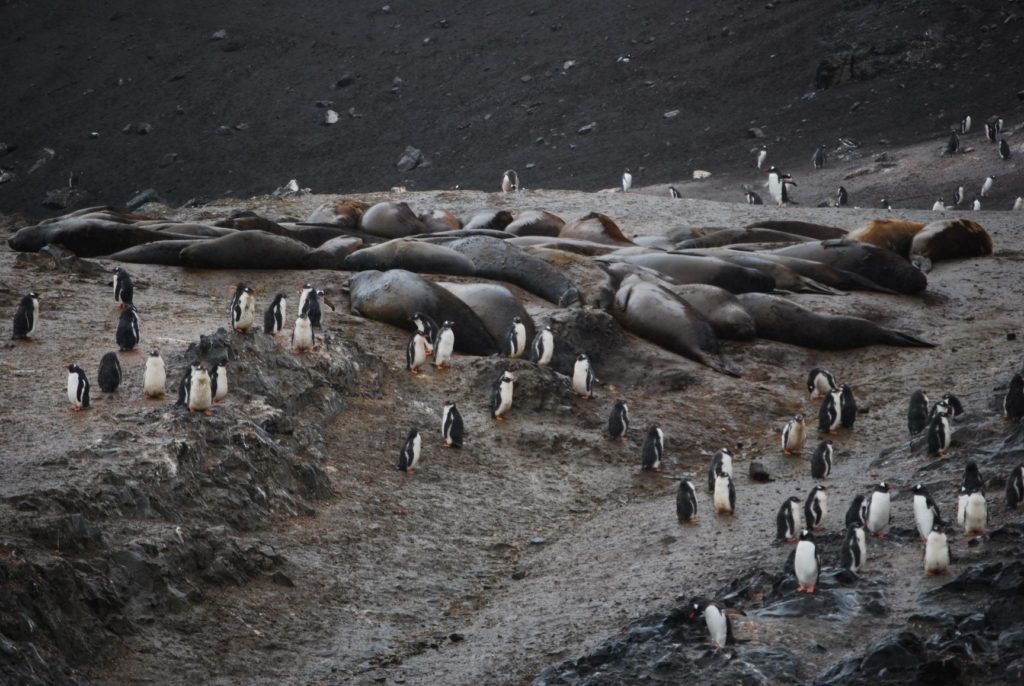
Not everyone’s perfect place to live but these Chinstraps and giant elephant seals seemed to be getting along great
But it was totally worth it. We broke into groups and walked amongst the delicate slow growing tufts of grass to see Gentoos and Chinstraps with their large fluffy chicks and a couple of rare (for this low latitude) Macaroni penguins with their cute yellow/gold feathers sticking out from their head. We also saw two lots of elephant seals just lying about in big lazy piles in and amongst the penguins.
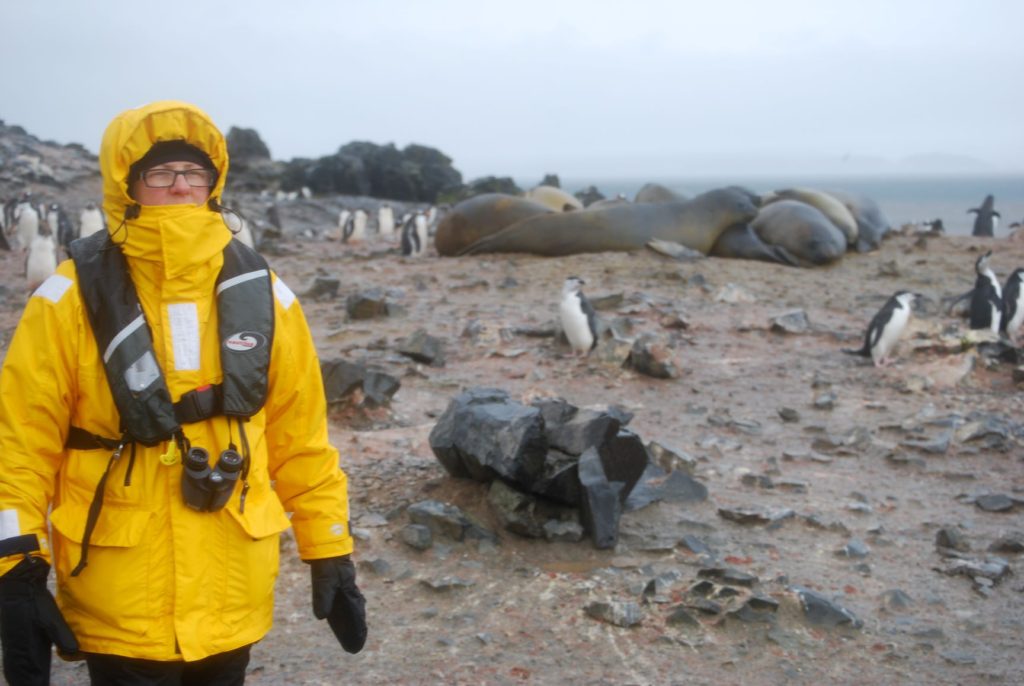
Despite seeing these wonderful creatures the weather was absolutely foul, as if you couldn’t tell by Julie’s appearance
We could get fairly close to these giant animals and loved the way they just lolled on each other, occasionally having a little flap or braying out but generally just huge piles of whiskered blubber. Most of our photos at Hanna Point were poor due to the rain on our lenses that we couldn’t do anything about.
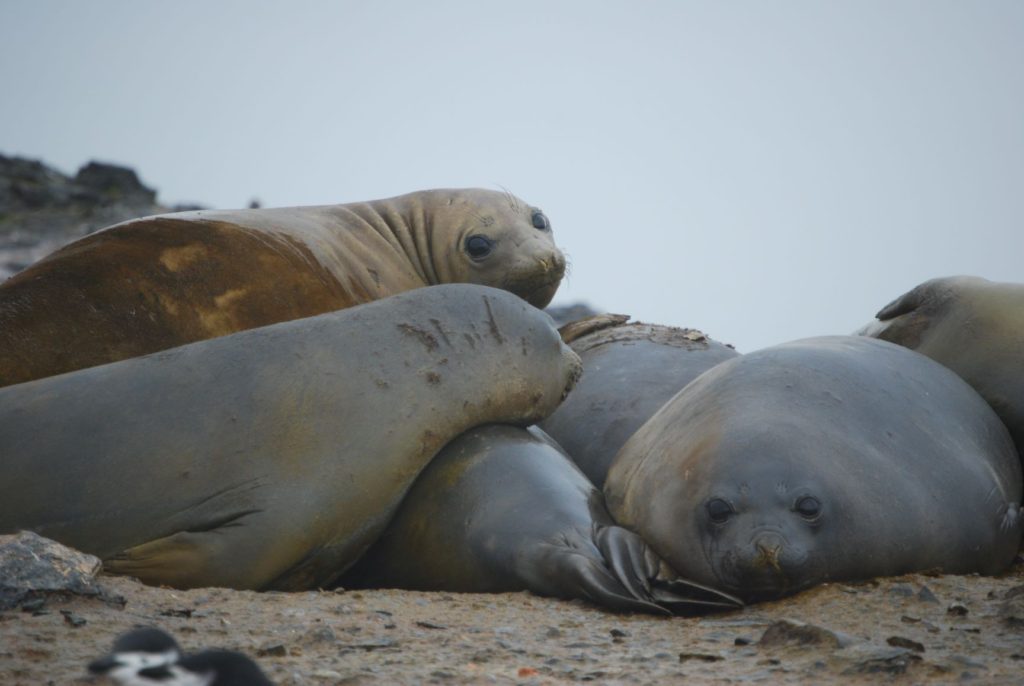
My favourite photo of the day, these massive elephant seals just loll across and atop each other all day
But as good as this authentic Antarctic moment was, the weather was absolutely terrible. We were all totally drenched and frozen to the bone, eventually catching a bouncy, soaked and slightly dangerous Zodiac back.
A hot shower never felt so good and the beers before and after dinner weren’t bad either. As we tucked into our bunk beds well past midnight the Akademik Ioffe began its rocking ride across the Drake Passage.

